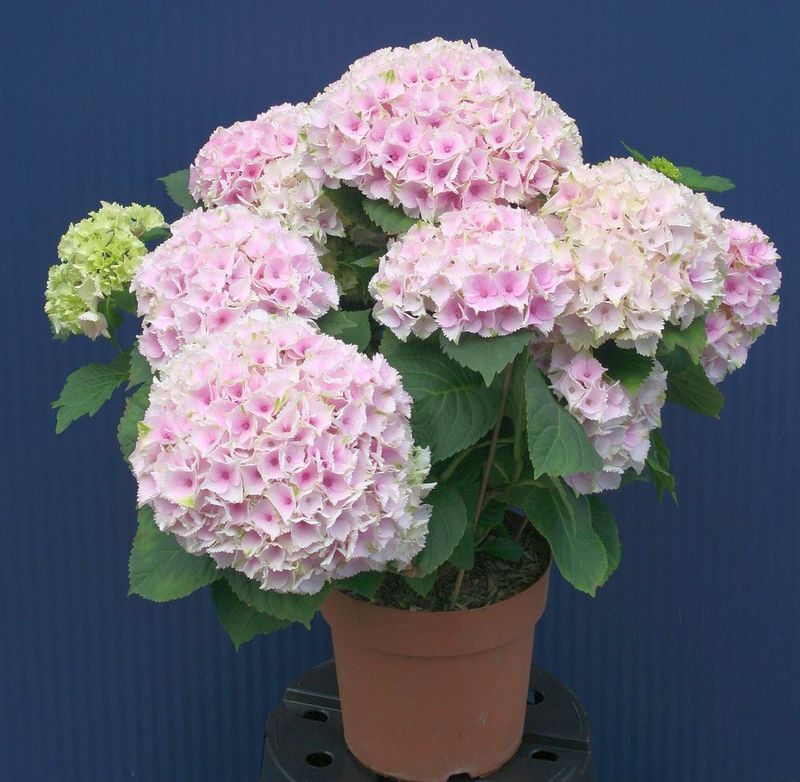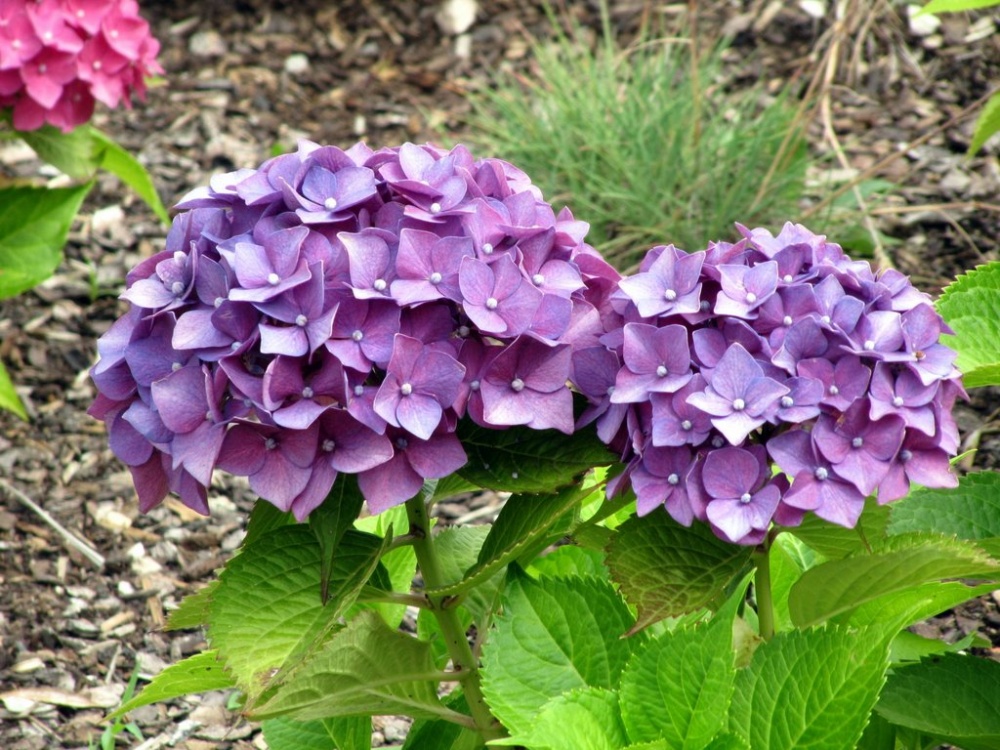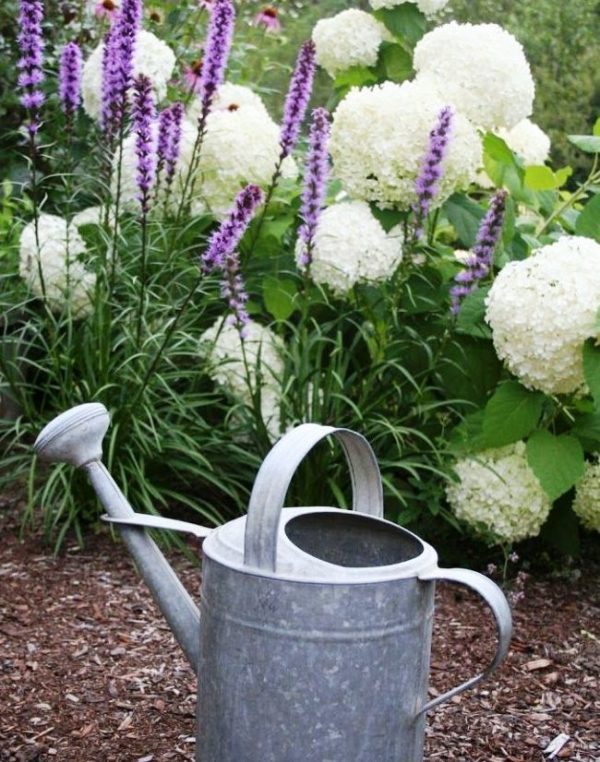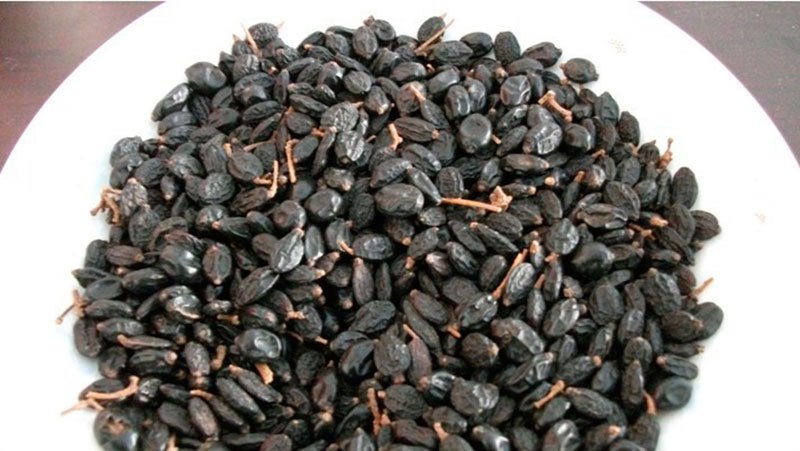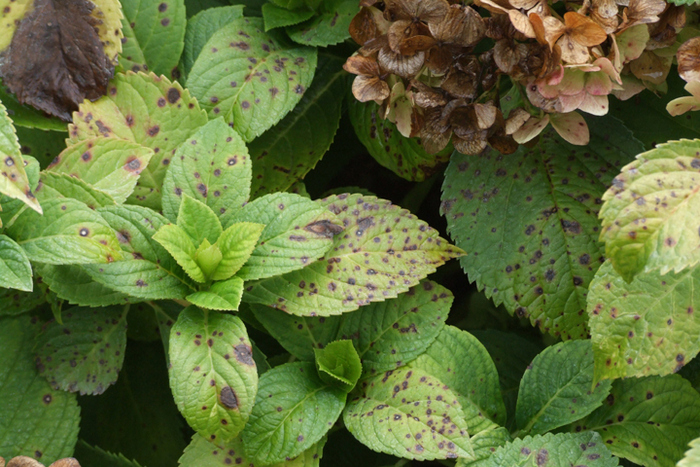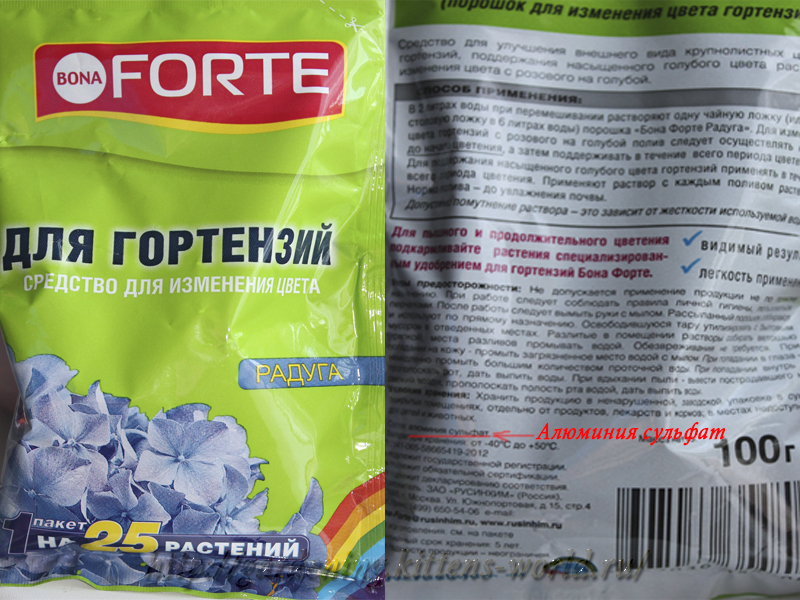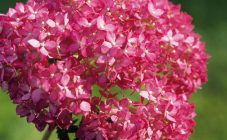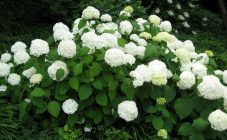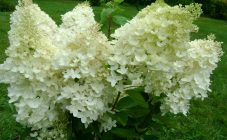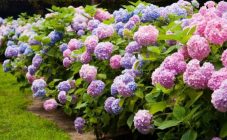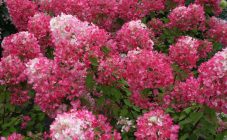Content:
Homemade hydrangea has been known to Europeans since the 16th century, when it was imported from China and Japan. Even then, she could be provided with proper care at home. Today, more than 100 species of one of the most popular and beloved indoor plants are known. The value of the plant is in its long, abundant flowering, which made it a favorite in the gardens of France and England. However, in indoor conditions, large-leaved hydrangea (Hydrangea macrophylla) is mainly grown - a shrub that can grow up to 4 m in height.
Types and varieties of room hydrangea
For all domestic hydrangeas, the general leaf shape is typical - ovoid, wide, juicy green. Inflorescences of white, pink or blue hue are scutes, reaching a diameter of 15-20 cm.Each flower can be 3 cm in diameter.Only those inflorescences that are located in the center of the scutellum are capable of forming an ovary with seeds, and the marginal ones are sterile. The aroma is pleasant, similar to jasmine.
All varieties in stores selling well-formed bushes or planting material are conventionally divided by shade, since by creating certain conditions for the plant, it is possible to achieve a change in the shade of its flowers.
White varieties:
- Madame Emile Mouillere is a French variety bred in 1909. The spherical inflorescences are boiling white at first, and then slightly pinkish. Flower buds are laid on the shoots for 2 years. Loves partial shade.
- Soeur Therese is a large shrub that grows up to 120 cm in height. It requires a special choice of location, as it suffers from burns in the hot sun, and stops blooming in strong shade. Blooms in small white inflorescences with pointed ends of petals.
Pink varieties:
- Goliath. The bush grows up to 70 cm in height, and the diameter of the inflorescences reaches 30 cm.The edges of the sepals are heavily cut. Among other varieties, this one is distinguished by a rather late flowering.
- Hamburg forms a strong spherical bush up to 120 cm high with inflorescences up to 25 cm in diameter. Requires annual formative pruning, but it is important to take into account that flower buds are laid only on last year's shoots.
Blue varieties:
- Earley Blue blooms from June to September. A compact bush on the windowsill grows up to 80 cm in height. Large inflorescences do not form seeds, therefore the variety reproduces only by layering, dividing the rhizome and grafting. Unlike many other varieties, this one forms flower buds on all shoots.
- Ramars Mars is one of the most popular varieties, which stands out for its lush, bright blue inflorescences up to 20 cm in diameter. Care requires the classic, including pruning.
A purchased flower should be planted in a new pot a couple of days after purchase. If the planting material is seeds, then sowing is carried out in mid-April, when the sun is bright enough. Propagation by cuttings is carried out in the summer, choosing young twigs with 3-4 buds for this.
Hydrangea: home care
This is not to say that hydrangea can be started in any home and guaranteed to get an excellent result. It's all about the plant's exactingness to the temperature regime. In an apartment where in summer the temperature in the room is above 22 ° C, the hydrangea in the pot will first begin to wither, and then die.All varieties of old selection are distinguished by this property. Among young domestic hybrids bred abroad, there are more resistant specimens, but all of them are intended mainly for growing in the garden. The list of rules on how to care for a hydrangea in a pot is small, but they will have to be followed strictly.
In winter, the plant needs a dormant period. It is provided without fail, because without this the bush will not bloom for the whole next year.
Next, you should wait until the plant has finally bloomed to perform formative pruning. Remove excess shoots, shorten the top. At the same time, it is important to leave enough branches this year, because it is on them that flower buds will be laid in winter. For all winter months, the hydrangea is transferred from the house in a pot to a room where the temperature is maintained at 10-12 ° C.
Watering and the required humidity
High humidity is exactly what all potted hydrangeas love so much. The bush responds positively to spraying foliage from a finely dispersed spray bottle with water. They do this in the morning and evening. Watering is carried out in compliance with certain rules:
- Make sure that the soil under the bush is always moderately moist. Watering is performed when the soil around the trunk dries up. An excess of moisture leads to decay of the roots.
- As the rest period approaches, the volume and frequency of watering are reduced. In winter, it is done only when the soil in the pot becomes completely dry.
- With the appearance of the first leaves in spring, you can resume intensive watering and make the first top dressing to stimulate flowering.
- Tap water is not suitable for irrigation. It is ideal to filter your tap water through a household filter, then boil and cool. In this way, they get rid of chlorine, rust and lime impurities, which are harmful to hydrangeas.
Lighting for indoor hydrangea
To determine a suitable place for a hydrangea pot follows the general rule: there should be no direct sunlight, but too much shade is bad. Ideally, put the pot on a high stand and place it 1-2 m from the south-facing window. Direct sunlight causes burns on the leaves and prevents the bush from blooming.
Also, hydrangea is demanding regarding the supply of fresh air. During the day, it is worth opening a window next to it for ventilation, but not for long. If you take the pots out to a cool balcony or terrace in the summer, then this will create ideal conditions for a whimsical flower both in terms of illumination and supply of fresh air.
The main problems when growing in a pot
By the appearance of the bush, you can always determine what kind of problem is tormenting him at the moment. So, when the leaves dry, the reason is insufficient watering, excessive dryness of the air can cause the same troubles to the delicate and sensitive foliage.
If possible, pots with hydrangeas are placed near aquariums or other containers of water. Spraying the foliage regularly (twice a day) helps. Watering in each case is selected individually, and in rooms with very dry air, even a second pallet is used, where water is poured. This creates evaporation around the flower, to which the leaves always respond favorably.
Yellow foliage is another common problem.It arises due to insufficient acidity of the soil. Watering with acidified lemon juice helps. The proportion is small - only 5 drops of fresh juice per 1 liter of water.
Pests and diseases of room hydrangea
Most often, the following diseases and pests are found in room conditions:
- Aphids and spider mites. These parasites are companions of excessive dry air. It helps wiping the foliage with a mild soapy solution, and in especially serious cases, spraying with the addition of actellik.
- Gray rot. This disease occurs with excess moisture. As a treatment, treatment with Bordeaux liquid is used.
- Yellowing of the leaves can occur due to insufficient watering or too alkaline soil reaction. Irrigation with the addition of ferrous sulfate (10 g per 1 liter of water), as well as ferrous sulfate (2 g per 1 liter of water) will help to solve this problem.
- Drying leaf tips indicate a lack of moisture and / or nutrients. Over time, in the absence of attention, the plant will begin to shed the buds, and then the leaves. Top dressing with a complex mineral fertilizer should be performed as an emergency.
- The lack of flowering directly indicates that the dormant period was not provided for the bush in winter. In this case, they act like this: they give the whole summer a rest, and in the fall they carry out pruning in order to prepare the hydrangea for wintering. After a year of rest, the bush will delight you with especially lush flowering.
- Brown spots on the leaves are a symptom of moisture deficiency, which is why they are monitored so closely.
- Light spots on foliage indicate sunburn. It is urgent to change the position of the pot by removing it from the window.
- Slow growth and poor flowering indicate a lack of fertilizer. It is recommended to urgently feed.
Top dressing for indoor hydrangea
In the summer months, the bush needs regular (2 times a week) feeding. The optimal fertilizer composition is as follows:
- 30 g of potassium sulfate;
- 40 g superphosphate;
- 30 g of ammonium nitrate.
This amount must be dissolved in 10 liters of water. Such intense subcortexes cease in the second half of August. By the time the plant stops blooming and it's time to cut it off, fertilizers are no longer added when watering. In winter, no dressing is added.
How to change the color at home
The owner has a great opportunity to get flowers of the shade that he likes best on the same plant. To do this, it is enough to choose the optimal soil composition:
- Sour soils give the flowers a blue tint. The enrichment of the soil with aluminum gives exactly the same effect. For this, when watering, water-soluble aluminum sulfate is added to the water. Proportion: 3-4 g per 1 liter of water. But do not allow the solution to get on the leaves, as this will cause a burn!
- The soil has a reaction of pH = 5.0-5.5. In this case, the flowers will turn blue. When watering, use aluminum phosphate (in the amount of 15 g per 1 liter of water) or elemental sulfur. A similar reaction is given by adding apple cider vinegar to the water for irrigation, and to the soil - chopped needles or herbs.
- Neutral soil (pH = 5.5). In this situation, the flowers will be white or with a beige undertone. There are other ways to achieve these shades. For example, add potassium permanganate to the water when watering, or sprinkle limestone on the soil under the bush. Well fixes the effect of ammonium monophosphate, which is used as fertilizer.
- Alkaline soil will make the flowers pink or lilac tinged.
- A soil pH between 5.5 and 6.0 will give the curious effect of the flowers becoming purple, or pink and blue flowers appear on the same bush. This can be achieved by irrigating neutral soil with a solution of ferrous sulfate. Proportion: 1 teaspoon in 7 liters of water.
All hydrangeas thrive in gardens and at home if the climate is right for them. If there is shelter in the southern regions, they can even wait out wintering. The garden shrub is much more impressive than the lilac or jasmine, as the flowering time is much longer.At home, hydrangeas also need frequent watering, as otherwise the leaves will dry out.
